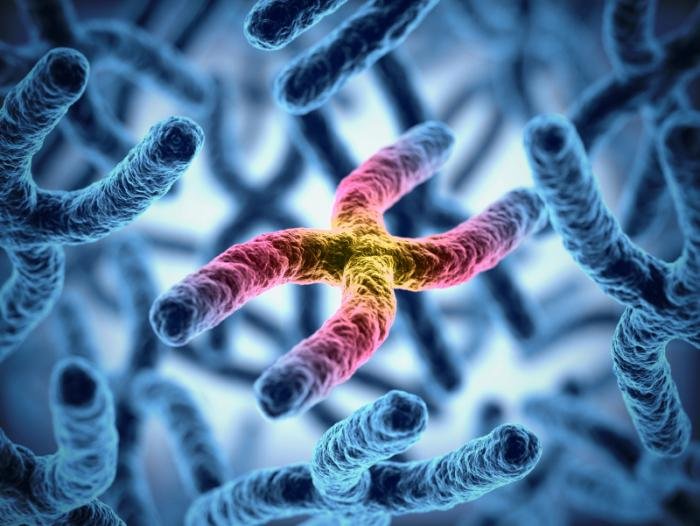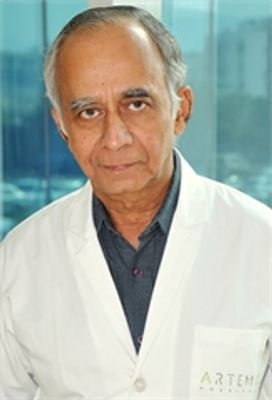Chromosomal Disorders in Humans

This medical guide has been curated providing in-depth information about Chromosomal Disorders in Humans, to spread awareness regarding the harmful effects of this DNA abnormality.
Chromosomal abnormality, mutation, disorder or aberration is a type of irregular deviation caused in the structure of human DNA.
Chromosomal Disorder
A Chromosomal Disorder or abnormality is the absence or presence of an extra, or irregular, or abnormal portion of chromosome DNA.
کروموزوم چیست؟
A chromosome is a DNA molecule that consists of part or all genome (genetic material) of the organism.
Facts about Chromosome
- Each Chromosome DNA have a unique characteristic structure.
- Scientists have been using staining techniques for coloring chromosomes into a band pattern.
- These banding patterns, make it easier to identify individual chromosomes, like a map.
- A group of chromosomes are called karyotype, that can be seen and studied under a microscope.
- Any deviation in the standard structure of karyotype can cause a chromosome abnormality.
- Some chromosome abnormalities or mutations are completely harmless, while some are considered clinical disorders.
- Almost 50% of spontaneous abortions are caused because of chromosome abnormalities.
Types of Chromosomal Disorders
وجود دارد multiple types of Chromosomal Disorders present in Humans, but they can be categories under two main categories:
Numerical Disorders (Aneuploidy)
It is also known as Aneuploidy, a condition in which an individual has an abnormal number of chromosomal in their body. This usually occurs when a person lacks a chromosome from the pair (monosomy) or has an extra chromosome in the pair (tetrasomy, trisomy etc.).
Down Syndrome diagnosed in humans is caused because of trisomy. Down syndrome is a type of developmental disorder that is caused due to the presence of chromosome 21’s extra copy, which is why the disease is also known as trisomy 21.
Having an extra chromosome means the person has 3 copies of the genes which should have been two, causing dysfunction, confusing cells from adequately controlling how much protein needs to be made. Production of protein in access or shortage can lead to serious consequences.
Turner Syndrome is an example of monosomy, in which the person is born with a single sex chromosome, say X.
Sperm Aneuploidy
Individual lifestyle choices, occupational or environmental hazards might increase the risk factors of aneuploid spermatozoa. Usually, tobacco smoking and exposure to insecticides, benzene, and per-fluorinated compounds can significantly increase the risk of aneuploidy.
ناهنجاری های ساختاری
Structural Abnormalities occur when a significant portion of DNA is added or is missing from a chromosome. Alteration in the chromosome structure can cause the DNA to take the following forms:
حذف ها: In this, a fraction of the chromosome is either deleted or is missing. A disorder that is caused because of this disorder includes Wolf-Hirschhorn Syndrome, which causes because of the partial deletion of chromosome 4. Another example include Jacobsen Syndrome (11q deletion disorder).
موارد تکراری: In this chromosome gets duplicated, producing extra genetic material. Charcot-Marie-Tooth type 1A that is caused because of peripheral myelin protein 22 duplication on chromosome 17.
Translocation: Condition in which portion of different chromosome gets transferred into another chromosome. It has two types:
- Reciprocal Translocation – Segments of two segments of chromosomes have exchanged.
- Robertsonian Translocation – A complete chromosome is attached to another chromosome. It usually occurs in chromosome 13, 14, 21, 15, and 22.
وارونگی: A mutation caused in a small section of chromosome due to its breaking or turning upside-down causing the genetic material to get inverted.
درج ها: A part of one chromosome is replaced from its original place and inserted in another chromosome.
حلقه: A broken portion of the chromosome that has formed a ring or circle, which might occur with or without the loss of any genetic material.
Isochromosome: Formed because of a chromosome identical mirror copy including the centromere.
- Chromosome instability Syndromes is a collection of disorders that are characterized by chromosomal breakage and instability. They can increase the tendency for developing multiple types of malignancies.
Chromosomal Abnormalities can occur because of the following reasons:
- They are caused when a cell division error results in producing very few or too many chromosome copies.
- They mostly originate in the gametes (sperm or egg). But some of these disorders can be inherited or might develop during the formation of an embryo.
- When gametes are formed, the two chromosomes (one from father and mother) are separated in the process called meiosis. This result in developing a copy of these chromosomes in the gametes. Any error in this separation process can develop incomplete or underdeveloped chromosomes, resulting in meiotic nondisjunction.
- Maternal age and exposure to certain drugs can also increase a patient’s risk of developing chromosomal abnormalities.
- The tiniest alteration or change in the structure of the chromosome can have a severe impact on multiple genes.
Acquired Chromosome Abnormalities
Most cancers can cause chromosome abnormalities because of the formation of fusion proteins or hybrid genes, causing overexpression or mutation in the DNA or genes. Specific abnormal chromosomal cells can even transform healthy cells into leukemic cells by translocation of genes, creating an inappropriate expression in the body function.
پرسش های متداول
What are the most common Chromosomal Disorders present in Humans?
Down Syndrome, Patau’s Syndrome, Turner Syndrome, and Edwards Syndrome are some of the most common types of chromosomal disorders found in humans.
What are the common signs and symptoms of chromosomal abnormalities?
Possible symptoms experienced by patients in this disorder are severe or mild mental retardation, cleft palates, circulatory and heart issues etc. Other symptoms might include learning disabilities or seizures. Some types of chromosomal disorders can also cause infant death or miscarriages.
Is chromosomal disorder fatal?
While some chromosomal disorders are completely harmless, others can make it difficult for the patient to live a decent lifestyle, causing learning disabilities and psychological dysfunction in them. Some chromosomal abnormalities can even prevent the patient from conceiving or cause recurring miscarriages.
How are chromosomal disorders detected?
Different techniques can be used for detecting multiple types of chromosomal abnormalities, some of which might include:
For diagnosis of Fetus – Amniocentesis, Circulating Fetal Cells or Chorionic Villus Sampling can be used for analyzing any possible defect.
For Embryo’s Preimplantation Diagnosis – Blastocyst Biopsy
For Leukemia or Lymphoma Screening – Bone Marrow Biopsy
Can chromosomal disorder be cured?
While most chromosomal disorders can be cured, or their symptoms can be reduced to allow the patient to live his/her life without any medical trouble, some of these abnormalities can’t be cured and usually can be inherited from parents.
What is the treatment cost of Chromosomal disorders?
The cost of chromosomal disorders depends entirely on the type and adversity of the disease that needs to be treated. Disorders acquired because of the development of cancerous cells in the body, require intense treatment whose cost can start from USD 2500. The price of chemotherapy for a period of six months is approximately $6,000 in India, while a bone marrow procedure can cost starts from USD 17430.
کاوش Medmonks.com to learn about Chromosomal disorders and its treatment options available in India.
منابع:
https://www.yourgenome.org/facts/what-is-a-chromosome-disorder
https://en.wikipedia.org/wiki/Chromosome_abnormality





